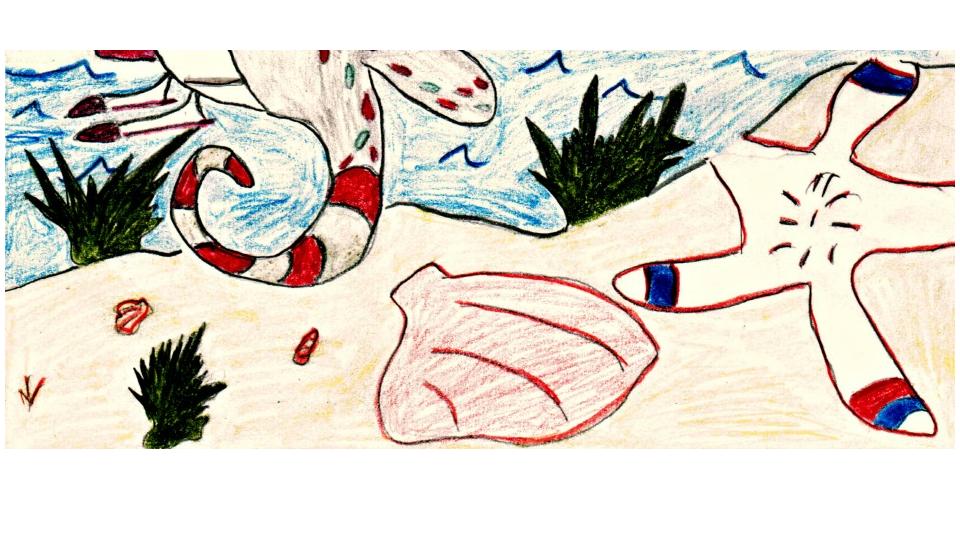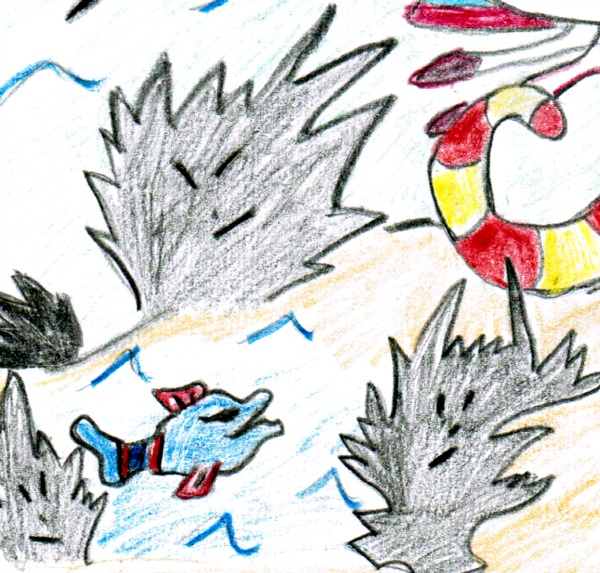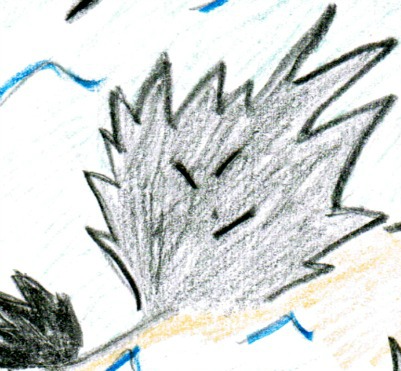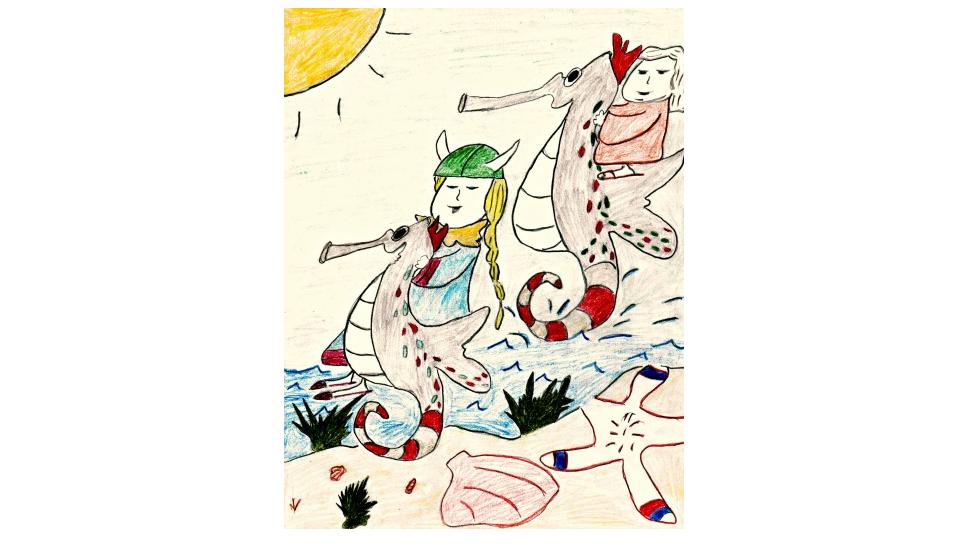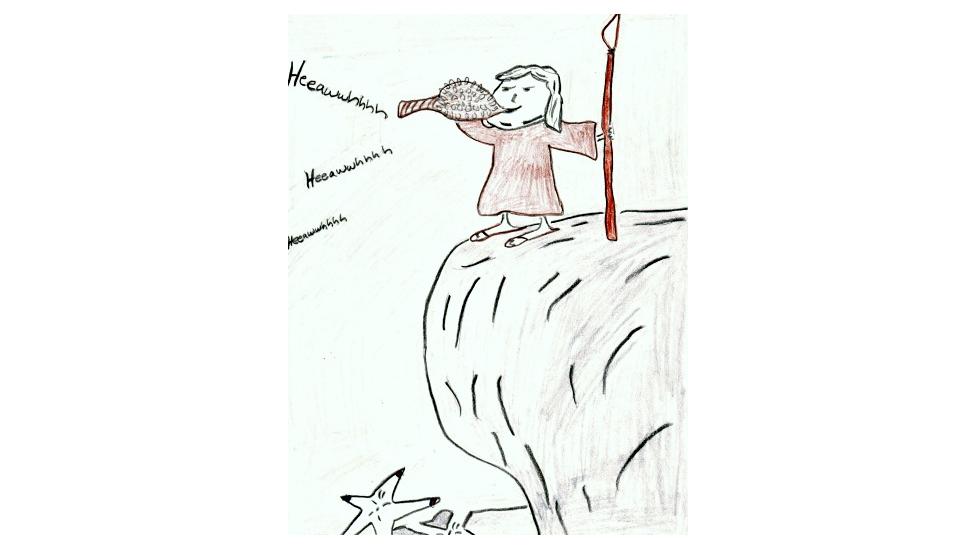
Come along with Hermit and Hermipedia today, and learn to Sound a Seashell…
…When he swam ashore all those years ago, he made it to the beach and collapsed with exhaustion.
He could feel the sunburn on his cheeks and the sand between his fingers, but he could not remember how he got there.
…Hermit looks around the beach at his surroundings to get his bearings, and pulls himself up to his feet. He looks across the water to the tall cliff in the distance. He’ll climb up it to see where he is, and know more about this new place.
As he walks along the sand, the waves tumble a large seashell in front of his path. This will come in handy, he thinks to himself. He picks up the seashell, and carries it.
The shell is large and heavy, and it must have housed a large sea snail. He wonders if he will be able to eat one? He will need to find some food eventually.
He inspects the shell inside, and peeks in to see if it is nice and clean as he walks along. The seashell is in fine condition, and he turns it to look at the spire end. There is a hole cut there, maybe by some predator, and he places the seashell up to his lips like a trumpet.
He wonders if he can make a sound from the shell by blowing, and a funny tune comes to his head…
She sells seashells by the sea shore…duh, dah, deet dah, bum, bum, bum-buh.
Where did he get that tune he wonders?
With the seashell at his lips, he closes them, and blows the air vibrating through, and buzzing into the shell.
Bzz, bzz sea shells, bzz, bzz, sea shore
He almost got it! What a good shell from the sea this is indeed.
The base of the rock cliff is just ahead, and Hermit leaps to the first rocks. He grabs with one hand and holds his seashell in the other, pushing up with his legs, and pulling with his one arm–he easily navigates up each rock crevice to the top of the cliff.

He springs to the top, and looks around at this new Island. Across the bay waters are more rock cliffs, and there is a natural cove shape that will most likely house many good fish to eat.
Behind him is a valley and clearing, and beyond that seems to be a stretching meadow. He pauses, and shuts out the sound of the waves below, and hears more running water past the meadow field. There must be a river too, he thinks.
This place offers much in ways to catch and grow food, and the running river water should be easy to drink. He looks out over the bay again, and sees some darker areas, where it must be quite deep.
There is so much here to work with, maybe there are already other people here, he questions?
Hermit brings the seashell up to his buzzing lips again, and this time gives a longer, drawn out buzzing blow of air…
heeaawwh…heeaaawwhh…heeaawwhh
He looks down and around to see if anyone will appear. He waits, and tries again with his new shell…three times buzzing the seashell out over the land and waters.
He catches in the corner of his eye some bubbles rising from the deep, darker part of the water. They grow larger and larger, and Hermit drops the seashell from his mouth to gaze in wonder.
What is coming up from the waters, he asks, and did my new seashell stir it or them?
Soon, orange color peeks up through the blue, and now Hermit is getting a little nervous. He is so preoccupied looking, that he doesn’t even see the sea stars moving up the rocks below.
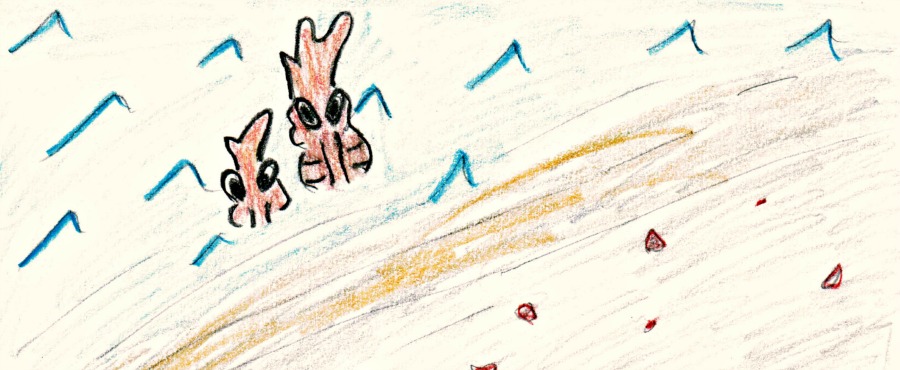
There they were…giant seahorses rising up to the top, peering at him with their big black eyes!
They must have heard his seashell sound, and have come to meet him. He’ll climb down, and get closer.

